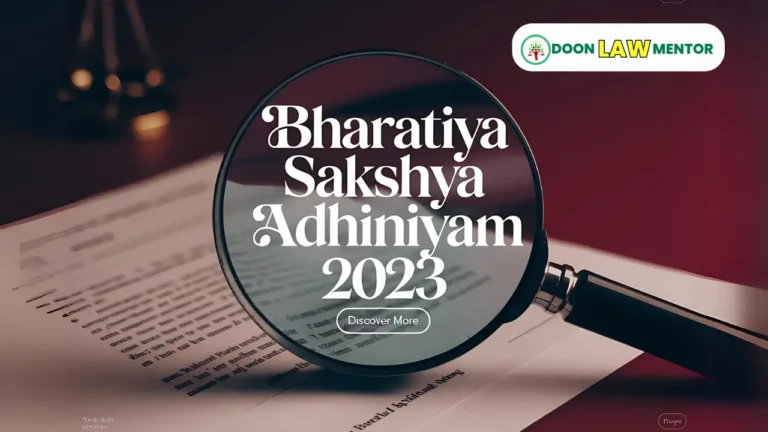The right to privacy under Article 21 faces unprecedented challenges in the digital age of 2025, with issues like data breaches, surveillance, and social media misuse threatening personal freedoms. This blog explores the legal framework, recent developments, landmark judgments, and future strategies for legal professionals and judiciary aspirants.
Table of Contents
Introduction
The right to privacy under Article 21 has become a critical issue in 2025 as the digital age reshapes how personal information is collected, stored, and shared. Article 21 of the Indian Constitution guarantees the right to life and personal liberty, which the Supreme Court has interpreted to include the right to privacy as a fundamental right. However, the rapid expansion of digital technologies—such as social media, artificial intelligence (AI), and government surveillance—poses significant challenges to this right, raising concerns about data breaches, online tracking, and state overreach.
For lawyers, legal professionals, and judiciary aspirants, understanding the right to privacy under Article 21 in the context of the digital age is essential for advocating for individual freedoms and shaping future policies. This blog examines the legal framework, recent developments, landmark judgments, and strategies to protect privacy in 2025’s digital landscape.
1. Understanding the Right to Privacy Under Article 21
The right to privacy under Article 21 is a fundamental right derived from the broader guarantee of life and personal liberty. Article 21 states: “No person shall be deprived of his life or personal liberty except according to procedure established by law.” Over the years, the Supreme Court has expanded the scope of Article 21 to include various facets of personal autonomy, including privacy. Key aspects of this right in the digital context include:
- Informational Privacy: The right to control personal data, such as financial records, health information, and online activity.
- Physical Privacy: Protection against unwarranted surveillance, such as through CCTV or facial recognition technology.
- Communicational Privacy: The right to secure private communications, such as emails or messages, without interception.
The right to privacy under Article 21 is not absolute and can be restricted by the State if the restriction is lawful, necessary, and proportionate, as per the principles of reasonableness and fairness. In the digital age, balancing this right with national security and public interest has become increasingly complex.
2. Landmark Judgments Establishing the Right to Privacy
The right to privacy under Article 21 has been shaped by several landmark judgments:
- Kharak Singh v. State of Uttar Pradesh (1962): The Supreme Court first recognized privacy as part of personal liberty under Article 21, striking down a regulation that allowed police surveillance of a suspect’s home as it violated his privacy.
- Govind v. State of Madhya Pradesh (1975): The court reaffirmed that privacy is a fundamental right but held that it can be restricted for compelling public interest, such as crime prevention, setting the stage for future debates on balancing privacy with security.
- K.S. Puttaswamy v. Union of India (2017): This landmark judgment unanimously declared the right to privacy as a fundamental right under Article 21, emphasizing its importance in the digital age. The court ruled that any invasion of privacy must pass the test of legality, necessity, and proportionality.
- Anuradha Bhasin v. Union of India (2020): The court held that internet shutdowns, often used to control digital communication, must be proportionate and subject to judicial review, as they impact privacy and freedom of expression under Article 21 and Article 19.
These judgments provide a legal foundation for the right to privacy under Article 21, but their application in the digital age of 2025 faces new challenges.
3. Challenges to Privacy in the Digital Age 2025
In 2025, the right to privacy under Article 21 is under threat from several digital-age challenges:
- Data Breaches and Cybercrime: With the rise of e-commerce, online banking, and social media, data breaches have become common. Hackers can access sensitive information like Aadhaar numbers or financial details, violating informational privacy.
- Government Surveillance: The use of facial recognition technology, CCTV networks, and AI-driven surveillance systems by the government, often justified for national security, raises concerns about mass surveillance. For example, the Central Monitoring System (CMS) allows the government to intercept communications, potentially infringing on communicational privacy.
- Social Media Misuse: Platforms like WhatsApp and Instagram collect vast amounts of user data, often sharing it with third parties for targeted advertising. The lack of user consent and transparency in data practices threatens the right to privacy under Article 21.
- Aadhaar and Biometric Data: The Aadhaar system, which stores biometric data of over a billion citizens, has been criticized for potential misuse. Despite the K.S. Puttaswamy judgment limiting its mandatory use, vulnerabilities in data security persist in 2025.
- Lack of Robust Data Protection Laws: While the Personal Data Protection Bill (PDP Bill) was proposed to regulate data usage, its implementation in 2025 remains incomplete, leaving gaps in protecting digital privacy.
These challenges highlight the urgent need to safeguard the right to privacy under Article 21 in the digital age, balancing individual rights with technological advancements.
4. Recent Developments in 2025: Privacy in the Digital Landscape
In 2025, several developments have intensified the right to privacy under Article 21 debate:
- Delayed Data Protection Law: The PDP Bill, intended to regulate data collection and processing, has faced delays in becoming law, leaving India without a comprehensive data protection framework. This gap allows companies and the government to exploit personal data with limited accountability.
- Increased Use of AI and Facial Recognition: The government has expanded the use of AI-driven facial recognition in public spaces, such as airports and railway stations, to enhance security. However, this has sparked protests from privacy advocates who argue it violates Article 21 by enabling mass surveillance without consent.
- Social Media Regulations: The 2021 Information Technology (Intermediary Guidelines and Digital Media Ethics Code) Rules, tightened in 2025, require platforms to trace the origin of messages and store user data for longer periods, raising concerns about privacy violations, especially after the K.S. Puttaswamy judgment emphasized proportionality.
- Cybersecurity Threats: High-profile data breaches in 2025, such as leaks of health records from online platforms, have underscored the vulnerability of personal data, prompting calls for stronger cybersecurity measures to protect the right to privacy under Article 21.
- Judicial Interventions: Courts have seen a surge in privacy-related cases, with petitions challenging government surveillance and social media data practices, reflecting the growing tension between digital innovation and privacy rights.
These developments highlight the evolving nature of privacy challenges in 2025, requiring a robust legal response to uphold Article 21.
5. Comparative International Analysis
The right to privacy under Article 21 can be informed by international approaches to digital privacy:
- European Union (GDPR): The General Data Protection Regulation (GDPR) sets a global standard for data protection, requiring explicit user consent for data collection and imposing heavy fines for breaches. India could adopt similar consent mechanisms to strengthen privacy laws.
- United States: The U.S. lacks a federal privacy law, relying on sector-specific regulations like the California Consumer Privacy Act (CCPA). This fragmented approach offers lessons for India to avoid, emphasizing the need for a unified data protection framework.
- Singapore: Singapore’s Personal Data Protection Act (PDPA) balances privacy with business interests, requiring organizations to notify users of data breaches. India could implement similar breach notification requirements to enhance transparency.
- Australia: Australia’s Privacy Act includes principles for handling personal data, with an emphasis on accountability. India could adopt a principle-based approach to ensure the right to privacy under Article 21 is protected in the digital age.
These international models suggest that India can strengthen its privacy framework by adopting best practices like consent, transparency, and accountability, tailored to its unique context.
6. The Role of Judiciary and Legal Professionals
The judiciary and legal professionals play a crucial role in protecting the right to privacy under Article 21 in 2025:
- Judicial Oversight: Courts must ensure that digital policies comply with the K.S. Puttaswamy test of legality, necessity, and proportionality. For example, challenges to facial recognition and message tracing are likely to shape future privacy jurisprudence.
- Advocacy for Privacy Rights: Lawyers can advocate for individuals whose privacy is violated, such as victims of data breaches, ensuring their Article 21 rights are upheld through litigation and policy reform.
- Judiciary Exam Relevance: For aspirants, the right to privacy under Article 21 is a key topic, often tested through questions on constitutional law, landmark cases, and contemporary issues like surveillance and data protection.
- Policy Recommendations: Legal professionals can push for the swift enactment of the PDP Bill, with provisions for data localization, user consent, and strict penalties for violations, ensuring a robust privacy framework.
The judiciary’s proactive role is essential for addressing the digital challenges to privacy, as seen in cases like Anuradha Bhasin.
7. The Path Forward: Strategies to Protect Privacy in 2025
To safeguard the right to privacy under Article 21 in the digital age of 2025, India must adopt a multi-faceted approach:
- Enact the Data Protection Law: Finalize and implement the PDP Bill with strong provisions for user consent, data minimization, and breach notifications, drawing from the GDPR model.
- Regulate Surveillance: Establish clear guidelines for government surveillance, ensuring it is targeted, transparent, and subject to judicial oversight, as mandated by K.S. Puttaswamy.
- Enhance Cybersecurity: Strengthen cybersecurity infrastructure to prevent data breaches, with mandatory audits for companies handling sensitive data, protecting informational privacy.
- Promote Digital Literacy: Launch public awareness campaigns to educate citizens about their privacy rights, such as how to secure online accounts and recognize phishing attempts, empowering them to protect their Article 21 rights.
- Balance Innovation and Privacy: Encourage tech companies to adopt privacy-by-design principles, ensuring that AI and other technologies respect the right to privacy under Article 21 while fostering innovation.
These strategies can help India navigate the digital age while upholding the constitutional right to privacy.
Conclusion
The right to privacy under Article 21 faces significant challenges in the digital age of 2025, with data breaches, government surveillance, and social media misuse threatening personal freedoms. Landmark judgments like K.S. Puttaswamy and Anuradha Bhasin have established privacy as a fundamental right, but their application in the digital context requires constant vigilance. International models like the GDPR offer valuable lessons in creating a robust privacy framework, while recent developments in 2025—such as delayed data protection laws and increased surveillance—highlight the urgency of reform.
For legal professionals and judiciary aspirants, understanding the right to privacy under Article 21 is crucial for advocating for digital rights and shaping future policies. By enacting strong data protection laws, regulating surveillance, and promoting digital literacy, India can protect privacy in 2025, ensuring that Article 21 remains a bulwark of personal liberty in the digital era.
Want to master the right to privacy under Article 21 for your Judiciary Exam? Join Doon Law Mentor’s Courses for expert guidance and study materials! Follow @doonlawmentor on Instagram for the latest updates!
FAQs
- What is the right to privacy under Article 21?
The right to privacy under Article 21 is a fundamental right to control personal information, secure communications, and protect against unwarranted surveillance, derived from the right to life and liberty. - What did the K.S. Puttaswamy case decide?
In K.S. Puttaswamy v. Union of India, the Supreme Court declared privacy a fundamental right under Article 21, subject to the test of legality, necessity, and proportionality. - What are the digital challenges to privacy in 2025?
Challenges include data breaches, government surveillance, social media misuse, Aadhaar vulnerabilities, and the lack of a comprehensive data protection law. - How does government surveillance impact privacy?
Tools like facial recognition and the Central Monitoring System can lead to mass surveillance, potentially violating the right to privacy under Article 21 if not proportionate. - What role does the judiciary play in protecting privacy?
Courts ensure digital policies comply with Article 21, as seen in Anuradha Bhasin, which mandated proportionality in internet shutdowns affecting privacy. - What can India learn from international privacy laws?
The EU’s GDPR emphasizes user consent and transparency, while Singapore’s PDPA focuses on breach notifications, offering lessons for India’s privacy framework. - Why is this topic important for judiciary exams?
The right to privacy under Article 21 tests knowledge of constitutional law, landmark cases, and contemporary issues like surveillance and data protection. - How does social media affect privacy in 2025?
Social media platforms collect and share user data, often without consent, threatening informational privacy under Article 21. - What strategies can protect privacy in the digital age?
Enacting the PDP Bill, regulating surveillance, enhancing cybersecurity, promoting digital literacy, and adopting privacy-by-design principles can safeguard privacy. - How can legal professionals contribute to privacy protection?
They can advocate for stronger laws, challenge violations, and educate citizens, ensuring the right to privacy under Article 21 is upheld in 2025.
#Article21, #RightToPrivacy, #DigitalPrivacy, #DataProtection, #IndiaLaw #constitutionofindia #ksputtaswamy #doonlawmentor










